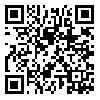Volume 13, Issue 4 (1-2024)
2024, 13(4): 97-109 |
Back to browse issues page
Download citation:
BibTeX | RIS | EndNote | Medlars | ProCite | Reference Manager | RefWorks
Send citation to:



BibTeX | RIS | EndNote | Medlars | ProCite | Reference Manager | RefWorks
Send citation to:
Shirinzadeh A. Yield and Production Gaps in Wheat in Parsabad Moghan, northwest of Iran. Journal of Crop Production and Processing 2024; 13 (4) :97-109
URL: http://jcpp.iut.ac.ir/article-1-3208-en.html
URL: http://jcpp.iut.ac.ir/article-1-3208-en.html
Islamic Azad university , asgar.shirinzadeh@gmail.com
Abstract: (2258 Views)
Wheat has an important role in food production of the world and Iran as well. It provides around 40 percent of energy and protein intake of Iran’s people. Closing yield gap can increase wheat production. The first step of closing yield gap is to quantify the yield gap at a given region or country. The objective of this research was to determine wheat (Triticum spp. L.) yields and production during the two cropping years (2013-2015) in the Parsabad Moghan in Ardabil province, northwest of Iran. To calculate the actual yield, a 22-year of official data and 460 farms under the management of farmers during 2014-2016 were used. The average and maximum attainable yield was estimated using field experiment results (FLD), comparative performance analysis (CPA) and the 90th percentile of record yield distribution. Based on the results of this research, a significant management yield gap was observed between attainable and actual yield (22%). In addition; genetic (i.e., gaps due to genetic selection) and total gaps in wheat were 11% and 36%, respectively. The increase in wheat production with the genetic selection and optimal crop management for the studied 28154 ha was estimated to be approximately 59000 tons with an economic value of 2.59 million dollars. Based on the results of this research, the yield potential of wheat genotypes can be achieved by closing yield gaps in the study area.
Send email to the article author
| Rights and permissions | |
 | This work is licensed under a Creative Commons Attribution-NonCommercial 4.0 International License. |






